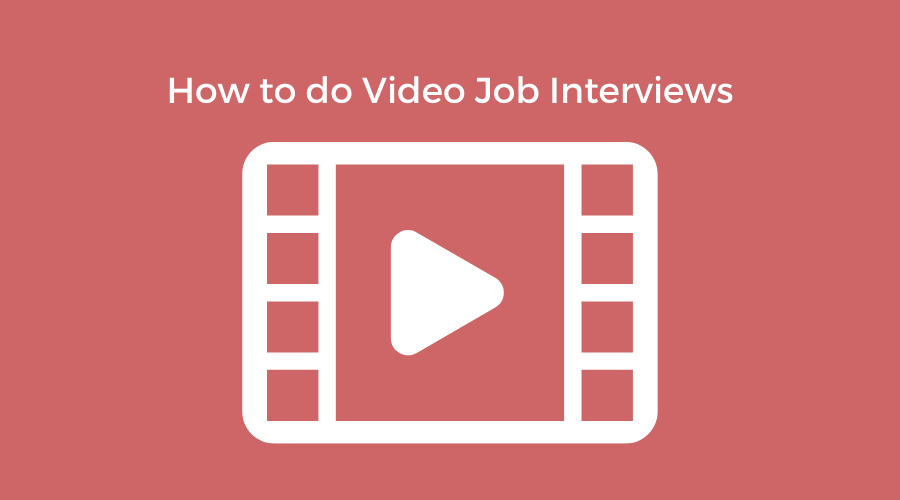
How to do Video Job Interviews
For the better part of two decades, recruiters have used video interviewing to accommodate working or distant candidates, hiring teams with busy schedules and save on travel costs.
It was a modestly growing trend among large and some mid-sized employers until the covid pandemic ended face-to-face meetings. In just a few months, 89% of all companies were conducting virtual interviews. Suddenly recruiters and hiring managers accustomed to face-to-face interviews had to cope with a whole new way of conducting an interview.
Few knew how to do video job interviews, so most just plunged ahead and interviewed candidates as they always had.
Yet video interviewing is different from in-person interviews in ways that are both obvious and subtle. Each has unique advantages — convenience and speed for virtual interviewing and engagement and personal connection for in-person interviews.
With 81% of talent professionals expecting video interviewing to continue post-Covid, knowing how to do video job interviews is essential. The new norm will be a hybrid model combining video and in-person interviews, according to 41% of recruiting leaders.
In this primer we’ll discuss how to do video job interviews and describe differences and some of the best practices.
When to use video interviews
Video interviews are most often used in situations where the candidate is remote and so is the job, or when a highly desired candidate is hesitant to take time off from work to travel.
Video interviews are also a convenient way to avoid scheduling challenges, especially when the candidate is to meet with more than one person.
In high volume hiring, one-way video interviews, where candidates respond on camera to a pre-recorded set of questions, are often used because they make it possible for a recruiter to review dozens of candidates in the time it would take to do just a few phone screens.
Virtual job fairs serve the same end enabling two-way conversations that can lead to immediate job offers.
Best practices
How to do video job interviews effectively takes more than good lighting and a solid internet connection. It’s not just conducting an interview the same way you would if the person was sitting in front of you.
Just as for an in-person interview, candidates need to be told the when and who and what to expect. Beyond that, they need instructions on how the technology works, especially if you’re using one of the many video interviewing platforms instead of the more familiar Zoom, Skype or Google Meet.
Communicate technical details
Give your candidates tips about lighting and the proper setting. Remind them the video will be recorded. To avoid the potential for interviewers being biased by what they see behind the candidate, suggest the candidate use a neutral, virtual background or, better yet, provide each candidate one. Encourage candidates to do a test run before the actual interview. And be sure everyone knows what to do in case of a loss of access.
Be professional – and forgiving
Log on early. No one likes to be kept waiting, but online there’s no one to reassure the candidate that the interviewer will be right with them or is running a few minutes late. If that is the case, let them know by text or email.
During the interview, be professional. Without the clear cues from having a live person in front of you, there’s a tendency to be more casual. Turn off your phone and messaging apps on the computer. Focus on the candidate and don’t multitask. If you’re taking notes, let the candidate know. Otherwise it can appear you’re not paying attention.
Adjust the camera position so you’re looking straight ahead at the candidate. Look directly into the camera and not down at the screen when speaking, as that’s how you make eye contact.
Be forgiving of the unexpected. Latency in the connection can cause slow responses and image freezing. If your candidate is interviewing from home there may be interruptions: a barking dog, FedEx at the door, or children talking.
Show the company culture
One of the less obvious differences with a virtual interview is that candidates don’t get to see anything of the company culture and the environment. LinkedIn says 51% of candidates want an office tour. As a substitute, offer a virtual one. Bigger companies bring in a production team to create a highly polished tour, like this one. You can also create a compelling tour by doing what Datadog did and pull together a collection of individual pictures.
Standardize the interview
Whether virtual or in-person, the most effective interviews are structured. Because virtual interviews can be recorded, asking a standard list of questions of each candidate allows for easy comparison and reduces the potential for bias.
At the conclusion, inform the candidate of the next steps.
The video job interview advantage
For companies that know how to do video job interviews effectively, they can be an advantage over competitors that don’t offer them or don’t do them well. A survey by the hiring technology provider iCIMS found 83% of candidates see employers that use them as more innovative.
Virtual recruiting is not just here to stay; 7-in-10 talent acquisition professionals expect it to become the new standard in recruiting. In fact, 23% expect to rely exclusively on video.
In this tight hiring environment to be competitive and attract the best people wherever you find them, it’s more important than ever that every member of the recruiting team knows how to do video job interviews well.
John Zappe Contributed


